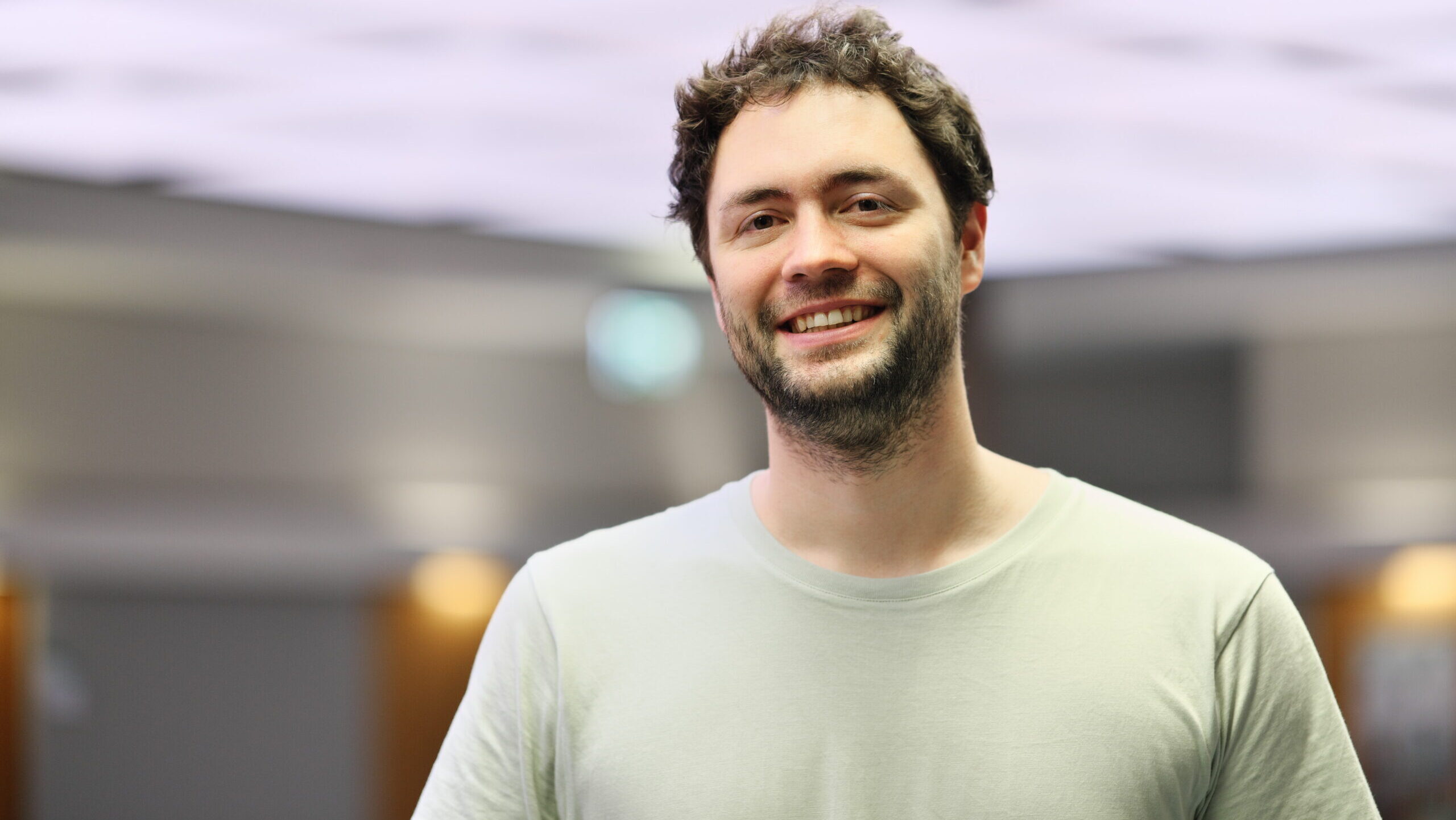“Science”: Mathematicians discover phenomenon that could make quantum technology more efficient

An international team of researchers, including mathematician Jonas Haferkamp from Saarland University, has discovered a new phenomenon in the world of quantum physics. States that appear completely random, without actually being so, are generated much faster than previously thought. This could significantly improve many quantum-physical applications. Due to its fundamental importance, the findings were published in the journal Science.
The following text has been machine translated from the German and has undergone no postediting.
When Jonas Haferkamp tries to explain what he discovered in his latest work published in the renowned journal Science, he uses a cup of coffee as an example:
“If I pour some milk into my coffee, I can still guess after a short time where the milk entered the coffee. But if I wait a few minutes, it’s just brown, and the information about the initial configuration has effectively disappeared,” says the junior professor of quantum information theory at Saarland University. “In theory, the atoms still contain the information about the initial configuration. But how could one ever extract it again from the mixture?” the mathematician asks, before adding: “What we found in our work is that in quantum mechanics there is an effect that works like stirring the coffee. Chaotic states emerge incredibly quickly.”
This analogy is meant to help illustrate what Jonas Haferkamp and his colleagues Thomas Schuster and Hsin-Yuan Huang from the California Institute of Technology have recently discovered: a phenomenon from the quantum world that no one had previously observed or expected, and that could help raise quantum technologies—such as those based on random measurements—to a new level.
Step by step: in Haferkamp’s research, coffee and milk play no actual role. Instead, the two substances symbolize what he and his colleagues describe mathematically: the random and highly complex interactions between “coffee particles” and “milk particles.” Just as coffee and milk form a chaotically mixed, inseparable unit, particles such as atoms, photons, or electrons behave when they reach a typical quantum state. Any efficient measurement will only yield averaged, generic answers that hardly reveal anything about the actual state.
Generating random quantum states is of practical importance for new quantum technologies. In a quantum computer with only a few qubits—the quantum equivalent of bits in conventional computers, as was still common in research a few years ago—this randomness was not yet a major problem. The “depth” of the circuits between the qubits, meaning the complexity of their interplay, was still manageable with small numbers of qubits.
In modern quantum computers, however, which now operate with several hundred qubits, the difficulty of reaching purely random quantum states increases exponentially. Even a fully functional quantum computer would quickly reach its limits.
“We have now discovered a phenomenon that could help reduce this complexity,” Haferkamp explains. At its core, he and his colleagues found a “mathematical trick” to merely simulate the complexity of the network of relationships between the particles. In practice, researchers attempt to transform a “truly randomized matrix”—which arises when describing the random, chaotic interactions of quantum particles—into a “pseudo-randomized matrix” that only pretends to describe a random quantum process. The new method for generating such pseudo-random processes can be implemented on quantum computers in a very short time. In mathematical terms, one would say the system has less depth or is “flatter.” In other words: it is less complex and therefore easier to generate.
For years, Haferkamp had been working on similar problems—first as a PhD student, then as a postdoc—until he and his U.S. colleagues discovered this phenomenon, which had previously been considered highly unlikely in the field. “In fact, many in our field were convinced that this type of pseudo-randomness would only emerge at much greater depth,” summarizes the mathematician, describing the consensus that prevailed until his publication.
The consequences of this discovery could be far-reaching. If these mathematical rules can be applied to technical systems, it could lead to substantial improvements in many quantum technologies, since these “pseudo-randomized” (shallow) circuits cannot be distinguished from truly randomized (deep) ones from the outside. Even on smaller quantum computers, this type of random process could soon help extract information from quantum experiments or enable the development of new encryption methods that were previously impossible.
Otherwise, it would just be cold coffee.
Original publication:
Thomas Schuster et al., Random unitaries in extremely low depth. Science 389, 92–96 (2025). DOI: 10.1126/science.adv8590
Further information:
Jun.-Prof. Dr. Jonas Haferkamp
Email: haferkamp(at)math.uni-sb.de
